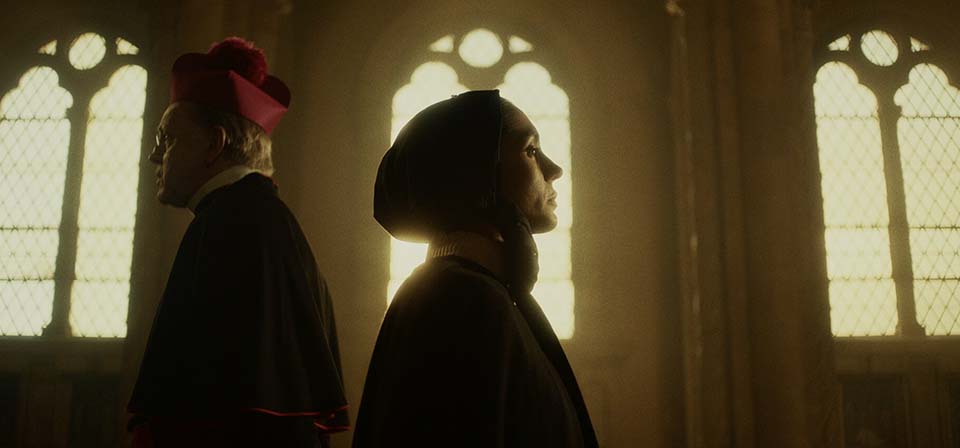The face of God in Cabrini
Does the movie “secularize a saint”? Reckoning with the curious dearth of God talk and overt religiosity in this faith-based biopic about the founder of a religious community
“If I have one critique of this movie, it’s that there should be more God.” With that sentence, social media priest Father Mike Schmitz introduces a caveat into his otherwise enthusiastic YouTube appreciation of Alejandro Monteverde’sCabrini. While Catholic response to the film has been largely positive, certainly in my experience, Father Schmitz isn’t the only one with concerns. On the website Catholic Culture, Thomas V. Mirus argues at length that “Cabrini secularizes a saint,” effectively portraying her as a heroine of feminism and social justice, but not Catholic faith — an indictment he considers “a fatal flaw.” Other devout critics made similar arguments.
Certainly, for a movie about a religious sister and a founder of a religious community, let alone a faith-based movie from Angel Studios (best known for The Chosen), Cabrini is strikingly bereft of religious language, ideas, and praxis. God is mentioned only a few times, and Jesus only alluded to. Prayer is implied, but directly depicted only in a brief Latin grace before meals (the familiar “Benedic, Domine, nos” or “Bless us, O Lord”). We see Mother Cabrini’s sisters teaching children, but no evidence of catechesis. And, while we learn a couple of the sisters’ names, the name of their community (the Missionary Sisters of the Sacred Heart of Jesus) is never so much as mentioned.
Years ago, writing about The Seventh Chamber, a movie about Saint Edith Stein, I observed that empathy — the subject of Stein’s doctoral dissertation and a major focus of her philosophical inquiry — is never mentioned in the dialogue. Isn’t this, I wondered, like making a movie about Einstein and never mentioning relativity? If so, would a movie about the founder of a religious community consecrated to the Sacred Heart of Jesus that never mentioned Jesus be like an Einstein movie that never mentioned science?
This might be overstating the case, but not by much. It’s fair to say that cinema is a visual medium, and, in a movie with scenes set in the Vatican and other religious environments, there will be crosses, crucifixes, and other sacred images — for example, the Sacred Heart image looking down over the dining hall of the sisters’ orphanage in Five Points. It’s also fair to say that a statue of an ancient Roman soldier in an establishing shot outside Rome’s Palazzo di Giustizia is given more visual prominence and symbolic significance than any sacred image I noticed.
Related

Cabrini celebrates human dignity and solidarity; the saint remains an enigma
What kind of world do we want, and what will we do to achieve it? Those are the questions with which Alejandro Monteverdi’s Cabrini leaves us at the end of its 140 minutes. The questions land harder after the story we’ve seen.
Recent
- Are there too many Jesus movies?
- Antidote to the digital revolution: Carlo Acutis: Roadmap to Reality
- “Not I, But God”: Interview with Carlo Acutis: Roadmap to Reality director Tim Moriarty
- Gunn’s Superman is silly and sincere, and that’s good. It could be smarter.
- Elio is a space adventure that Toy Story’s Andy would actually enjoy
Home Video
Copyright © 2000– Steven D. Greydanus. All rights reserved.